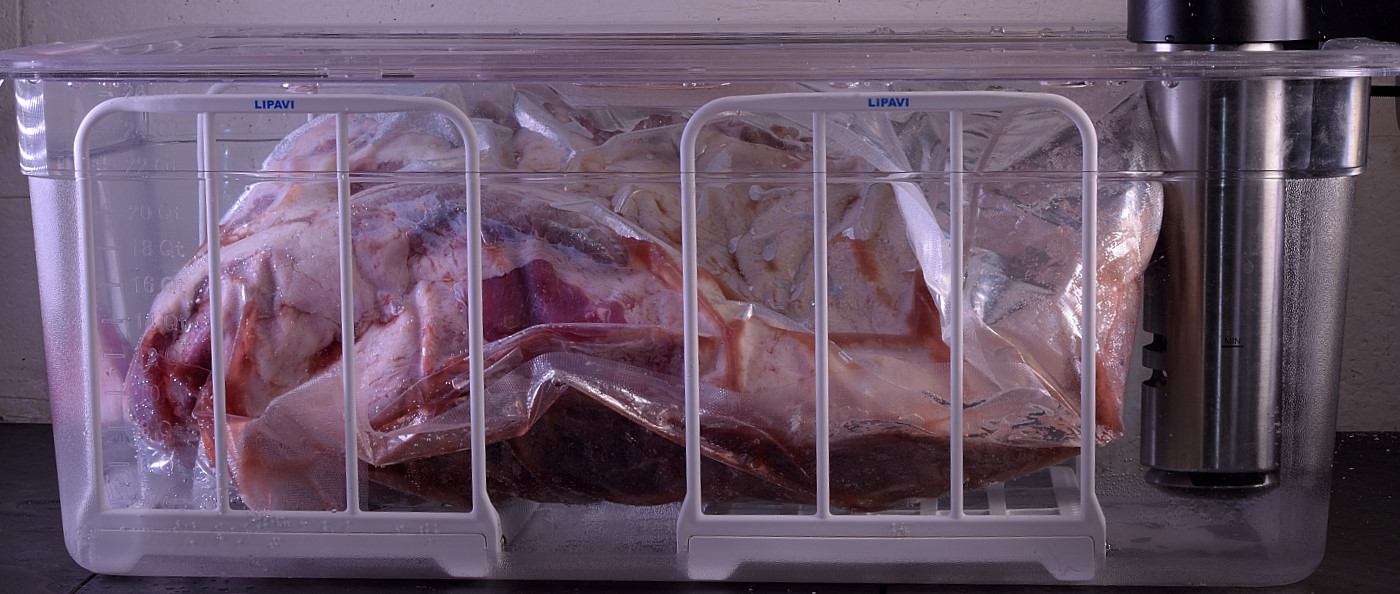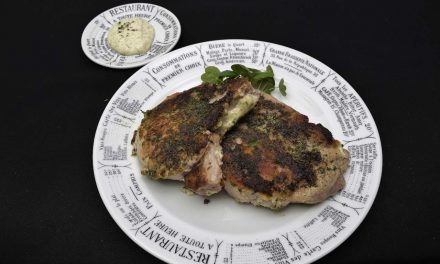The Catch-All, Quick Start, Kool-Aid drinker’s guide to Sous Vide Processing.

This approach to Sous Vide can be used for Beef, Veal, Chicken, Pork, and almost any other land or air dwelling prey. It does not necessarily apply to fish or seafood.
- According to the scientific evidence, proteins processed via sous vide cannot be penetrated by any flavoring in the bag other than sodium ions, typically in the form of salt.
- Adding flavorings to the bag for the benefit of flavoring the sous jus is safe in most cases, but keep in mind that typical sous vide temperatures are not hot enough to cook/denature garlic or any other vegetable products.
- Safe processing temperatures typically start at 129 F/54 C.
-
Temperature determines appearance of doneness.
-
Time determines tenderness.
-
The higher the temperature, the faster the process of tenderization and the greater the moisture loss..
- Calculate temperature penetration and pasteurization times using Baldwin.
- If products are to be refrigerated safely after sous vide processing, they must first be cold shocked in (iced) tap water to 70 F/21 C in cold water before refrigerating at 40 F/4 C. Provided the seal is not broken, the product will keep at least two weeks without degrading.
- At service, harvest the juices and process according to the method explained HERE. Remove the product from the bag and pat dry.
- Applying a thin coating of powdered egg white and moistening will replace the albumins that were removed from the surface of the meat during processing. This will create a sticky surface for flavorings to cling to.
- Retherm using conventional methods as desired (searing, roasting, smoking) long enough to achieve 130 F/55C, “mouth hot.”

Norm King
visit us in real time at SVR–Sous Vide Resources; Low Temperature Pasteurization, Sous-B-Q™, | Facebook





